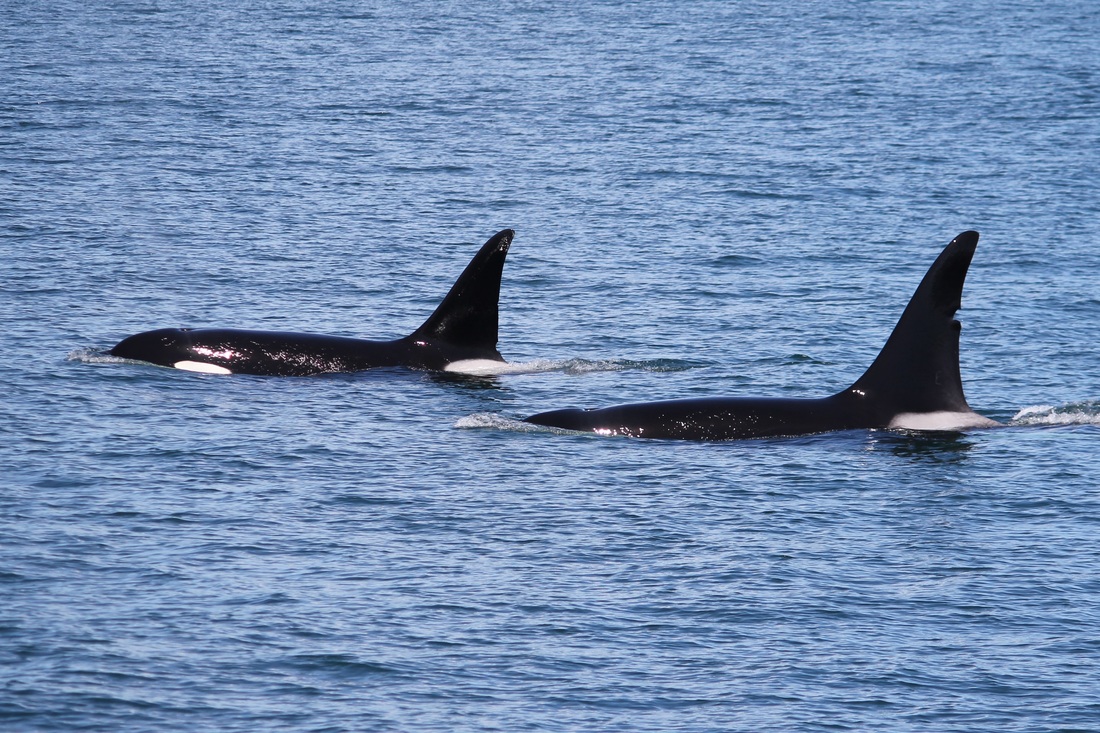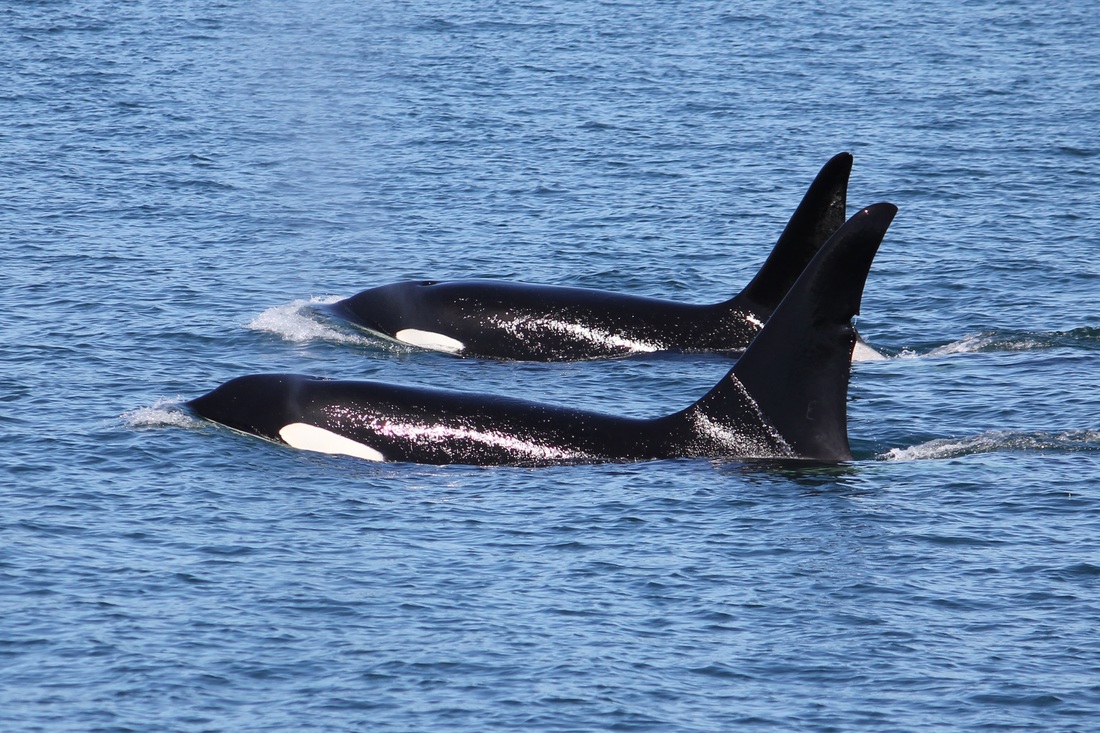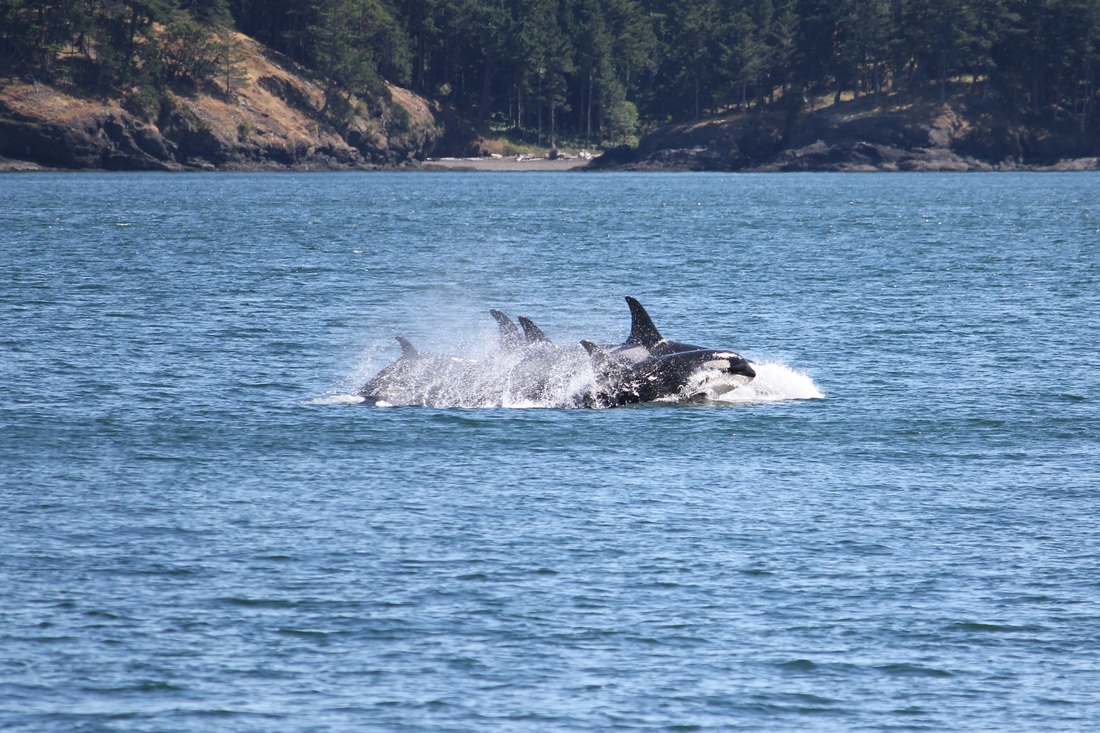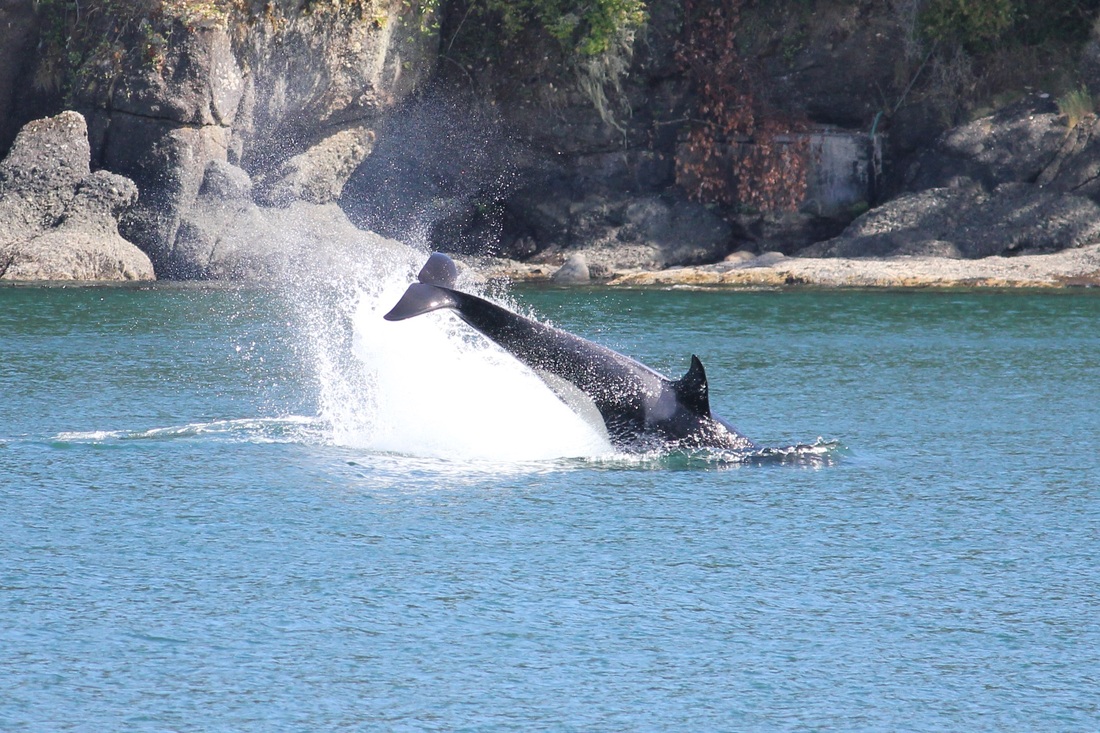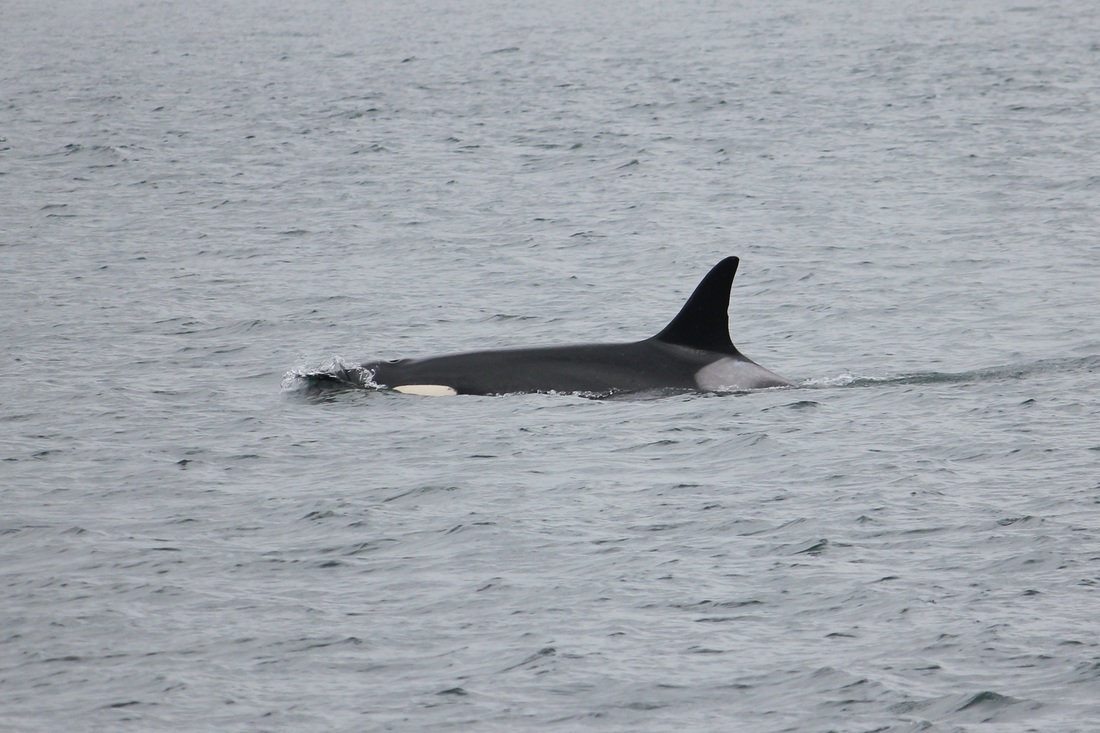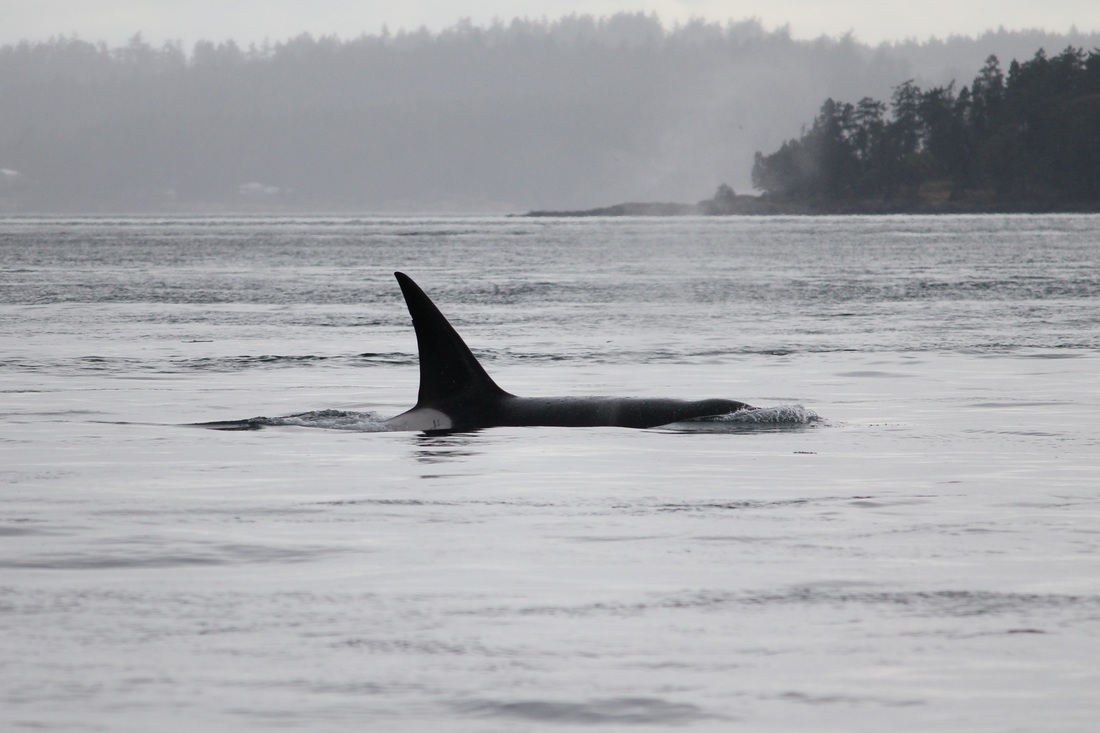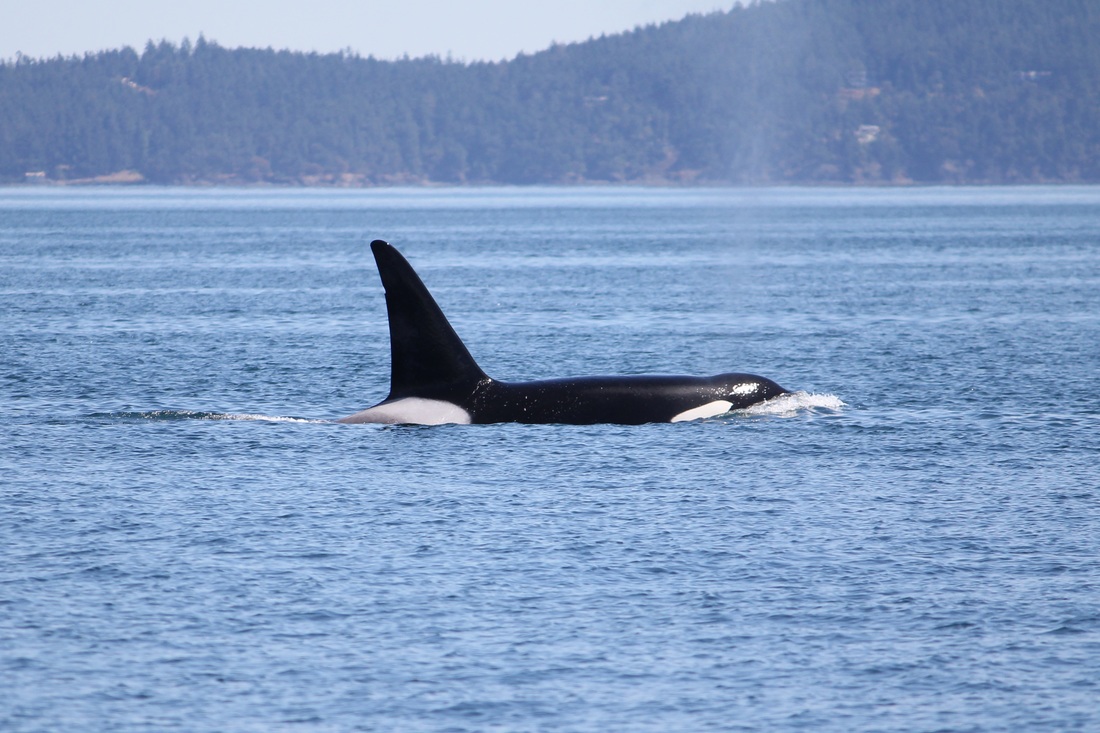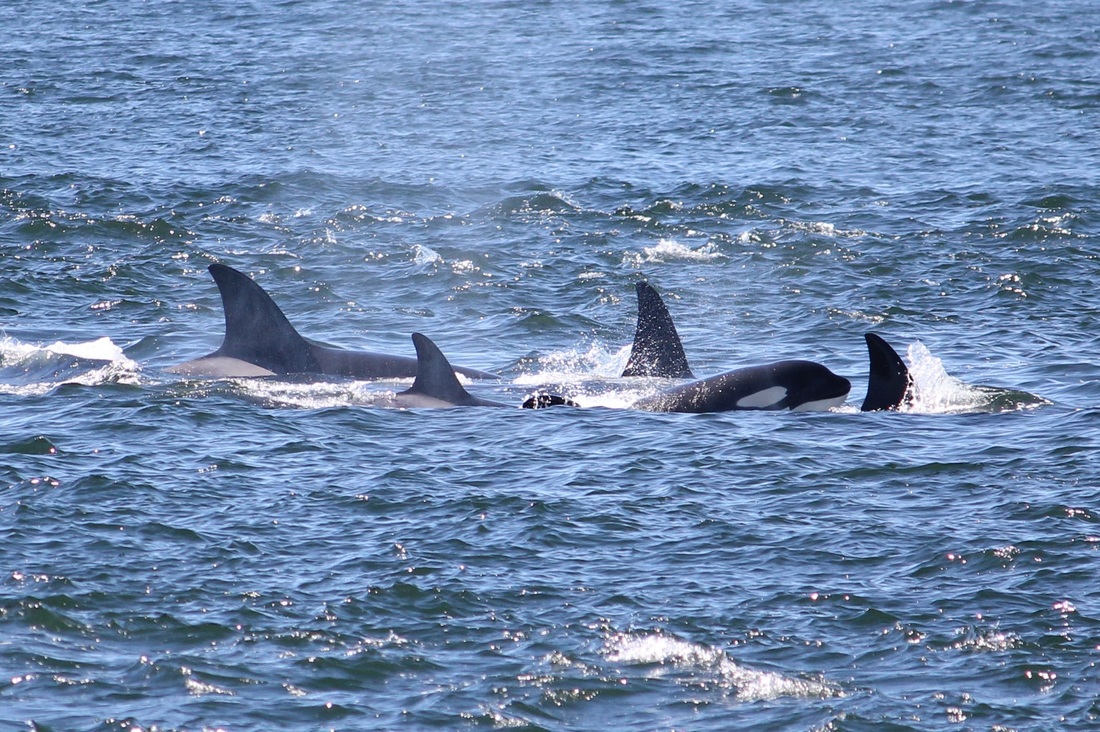On July 15th, we saw the T34s and T37Bs twice on the Odyssey of San Juan Excursions. On our morning trip, we watched as the two matrilines (each with a new calf) as they hunted harbor seals along Fattop Island. They definitely made at least one kill there and celebrated with multiple spy hops. After a bit of milling around, they eventually moved over to White Rock, made another kill, and celebrated again with a spy hop, tail slaps, aerial scans, and other excited behaviors. It was amazing to see how the orcas maneuvered very close to the rocky shorelines and worked together to catch their prey. On the afternoon trip, we met back up with them up in Georgia Strait. They were slowly traveling up the strait, with their bellies likely quite full after having such a successful morning!
On July 16th, we encountered the T34s and T37Bs again on the Odyssey as they headed up Rosario Strait. It was lunch time for them as they circled and milled about at Peapod Rocks while frightened harbor seals looked on. They likely made at least one kill while we were with them and they celebrated with a spy hop and aerial scans.
On July 18th, a few salmon-eating southern resident orcas returned to San Juan Island. It was four matrilines from L pod known as the L4s, L26s, L47s, and L72s (19 out of 35 L pod members). I watched the Ls from shore as they looked back and forth along the island for Chinook/King salmon to eat. The next morning, they were already leaving the area in their search for a place with greater salmon abundance.
On July 23rd, the southern residents were back. The L4s arrived first from the Strait of Juan De Fuca, followed by the L26s, L47s, L72s, and all of J pod. We got to see more than half of the entire endangered southern resident orca population (only 78 orcas) from the Odyssey. It was great to see the Js and Ls socializing and having some fun. They seemed excited to back in what was historically their home for much of the year when Chinook/King salmon were plentiful. However, they could not stay for long and headed back out the Strait of Juan De Fuca a few days later.
Aboard the Odyssey on July 27th, we saw the T34s and T37Bs again up near Sucia and Matia Island. When we first arrived on scene they were in travel mode but they then switched to hunting mode and milled about for a bit. It was unclear if they managed to successfully catch whatever they were hunting while we were with them.
On August 2nd, the T18s came into the area from the Strait of Juan De Fuca and the Odyssey traveled up the west side of San Juan Island with them. Amazingly, when they reached Open Bay, they turned and swam into Mosquito Pass, passed Roche Harbor, and popped out in Spieden Channel. I have never heard of transients going all the way through Mosquito Pass in recent years, if ever! It was also great to see one my favorite transient males, T19B!
On August 3rd, the 19 Ls returned to San Juan Island, with the L4s arriving first, just like on July 23rd. Aboard the Odyssey, we spent time with the L4s as well as three humpbacks that seemingly felt threatened by them. They seemed to think that the L4s were marine-mammal eaters instead of salmon-eaters. The three humpbacks stuck close together, trumpeted loudly as they exhaled, and moved away from the orcas. What an interesting encounter!
The Ls started to leave the area that night and were outbound in the Strait of Juan De Fuca the next day. Since April 23rd, 2017 and as of today (August 4th), there have been only 72 Chinook/King salmon counted up at the Fraser River so it is better that they look for salmon elsewhere at this time.
Please do not use my photos without my permission
